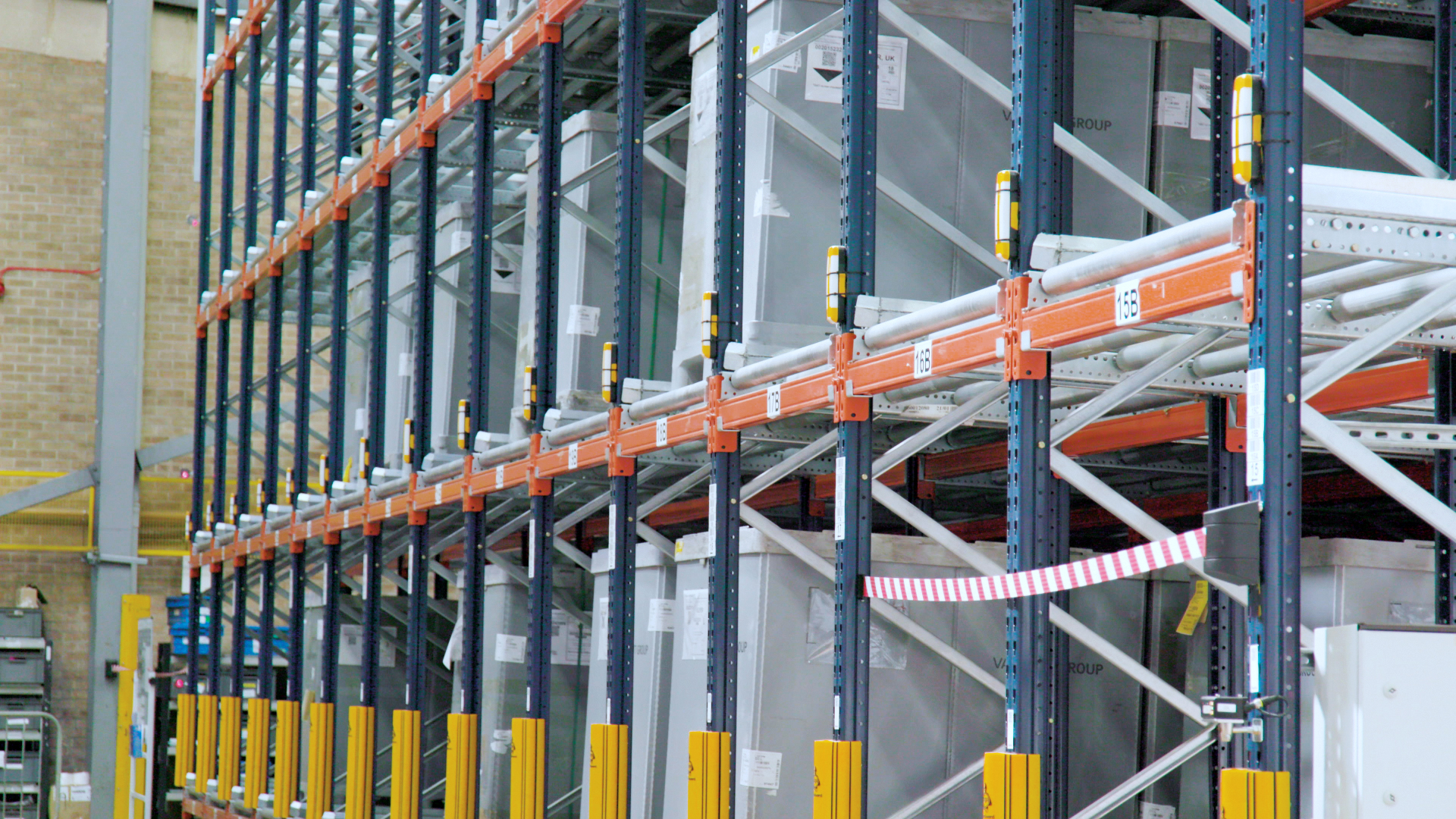How many measures do you put into practice to improve the
security of your warehouse? Warehouses are places of transit or permanence of
our clients' merchandise and that makes them places to be protected. But ...
What do we do to make this security a reality?
There are several approaches from which warehouse security can be analyzed and addressed: from facility design to theft prevention. And, as it cannot be otherwise, we must analyze what are the consequences and benefits that our efforts will bring us when it comes to shielding our warehouses.
What can I do to increase the security of my warehouse?
Warehouse architecture
Safety is one of the most important things we have to think about when designing our warehouse. Some may believe that security is only about preventing theft, but taking care of the merchandise also has to do with preventing the merchandise from being inadvertently damaged during its life in the warehouse.
Among the main ways to achieve this is the planning and separation of spaces. That is, to adequately and easily delimit the areas destined for various tasks: order preparation, merchandise transfers, reception of materials, waste, etc. This also includes visual and / or physical separation, where possible, of transit areas for personnel and machines.
Another method is the elements that protect the components
of the warehouse itself. Among the most feared logistics nightmares is an
accident that causes multiple shelves to knock each other over in a domino
effect. To minimize this risk there are shelving protective and safety barriers, which are placed on the sides of the shelves to avoid impacts. When
installing them, remember to take into account that they reduce space,
including that which machinery (such as forklifts) has available to maneuver. Contact Verge Safety Barriers, if your company need assistance.
Finally, it must be remembered that security also includes the exterior of the ship. In this case, we refer to the installation of elements that prevent the possible entry by force through the use of vehicles as a ram. That is, in a similar way to the anti-moon landing measures that are commonly used in shops.
Caring for people
The importance of warehouse design should not make us forget to take care of the human side, which is the most important and the most fragile. It is common to see warehouses in which the use of protection elements - safety shoes, clothing that increases visibility, gloves, etc. - is still not respected, even though there are signs that remind them of their obligation.
The best way to implement these good habits is by example. It is very difficult for a staff to internalize them if they see how managers and office staff go down to the warehouse without adhering to these rules, so they too will become lax in complying with these protocols.
The management of the company must also ensure that the staff is trained in the use of safety elements and the machinery they work with, in addition to the good condition of said machinery. If employees see in their day-to-day work that safety or work elements are in poor condition, an ideal breeding ground will be created in which disregard for safety is part of the company culture.
Prevent against theft
Thefts are a source of dwindling goods. Large shopping centers calculate each year the percentage of theft that they estimate they will suffer, and the world of logistics - and the companies that partially or fully manage their supply chain - is no stranger to this.
The origin of the thefts can be internal or external. The most common thing is that a warehouse can be accessed by different people outside the company (people who deliver or collect merchandise, people not even related to the warehouse activity, etc.) and who can also be from many companies, to make it a whole little more complicated.
In any case, the recipes to try to prevent theft will be common for both cases: prevention and signaling. Preventive measures include access control, monitoring and recording of merchandise areas and entrances and exits, additional restrictions in especially sensitive areas (or with objects and products of higher value), etc. Regarding the signaling, the deterrent effect must be emphasized that have the notices that what happens in the facilities is being recorded. There is a part of the thefts that are not premeditated or “professional” but are due to opportunism or the impulse of those who think they see a good opportunity; to prevent these cases, signs are usually especially effective.
Benefits of good security
Improving the security of our warehouse will have very positive consequences for the company and its environment. A staff that carries out their work in an environment in which safety is valued and in which they are provided with the necessary materials and training will be more motivated and will feel more identified with the company.
The image of the firm itself will also be reinforced. Customers who can visit your facilities and those who notice an improvement in the number of incidents (losses, breakages, etc.) will raise their perception of our quality and the service received.
Finally, we must also highlight the improvement in costs for the company that owns the warehouse. Although in everything related to safety the first point is always the physical integrity of people, in the background there will also be cost improvements due to the reduction of accidents, casualties, theft or compensation to clients for possible breakages.
In short, a warehouse in which safety is the central pillar will improve the happiness of the workers, the image of the company, the service and the relationship with the customers. There is every reason to review what else we can do to improve the security of our logistics warehouses.




Comments
Post a Comment